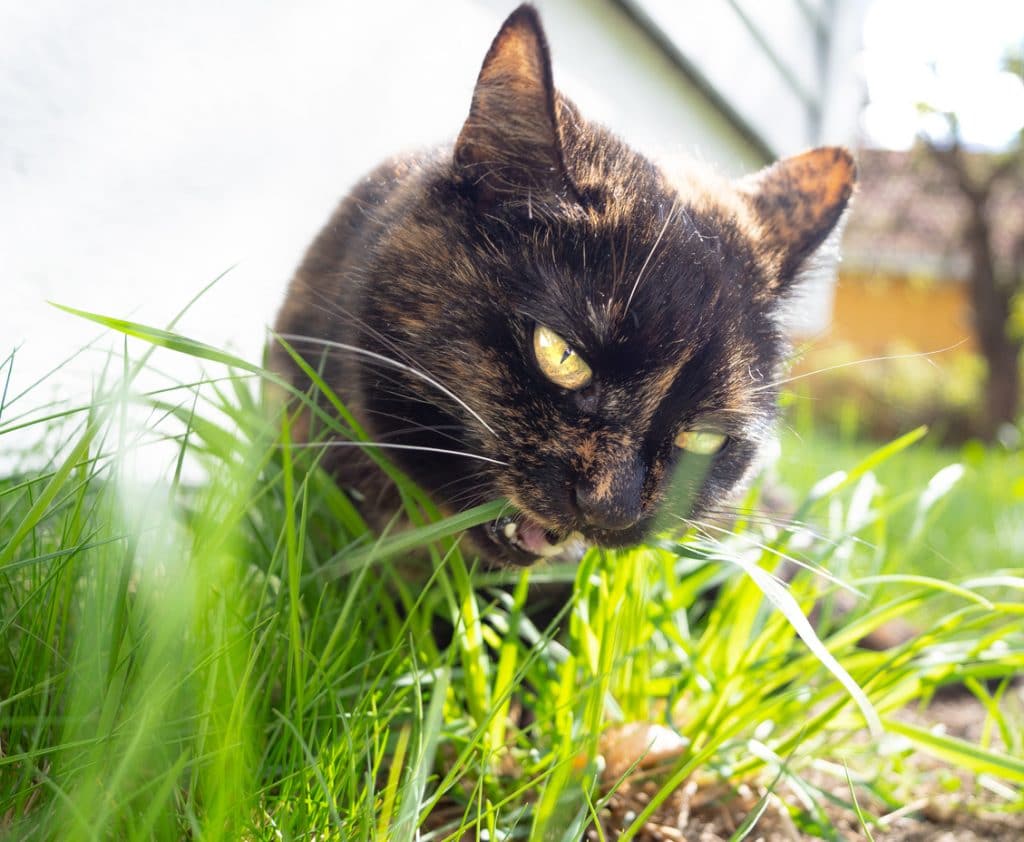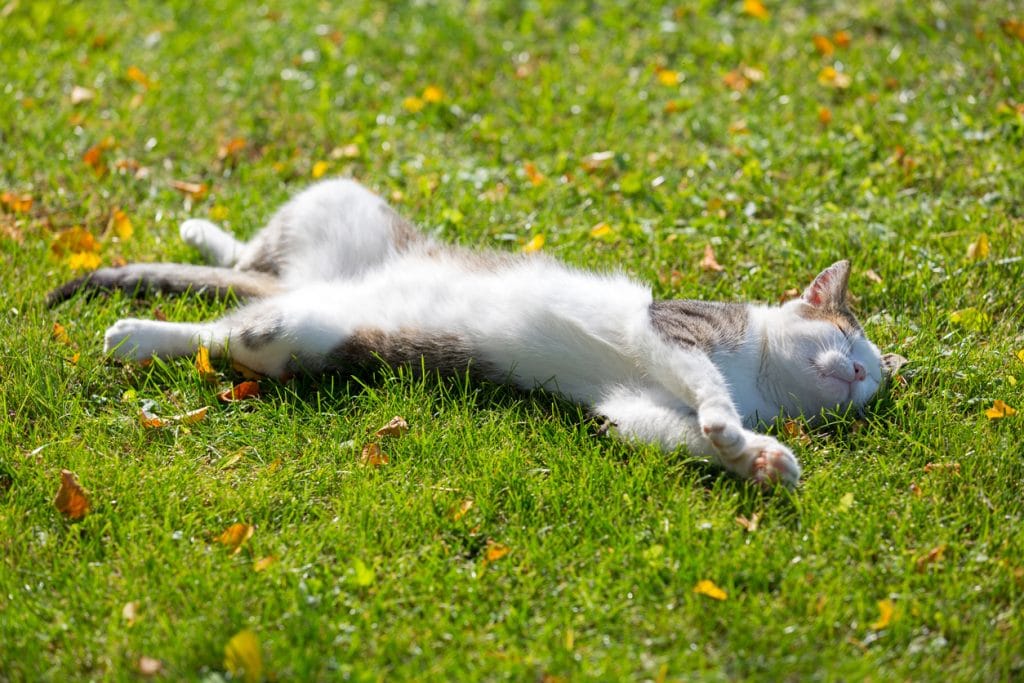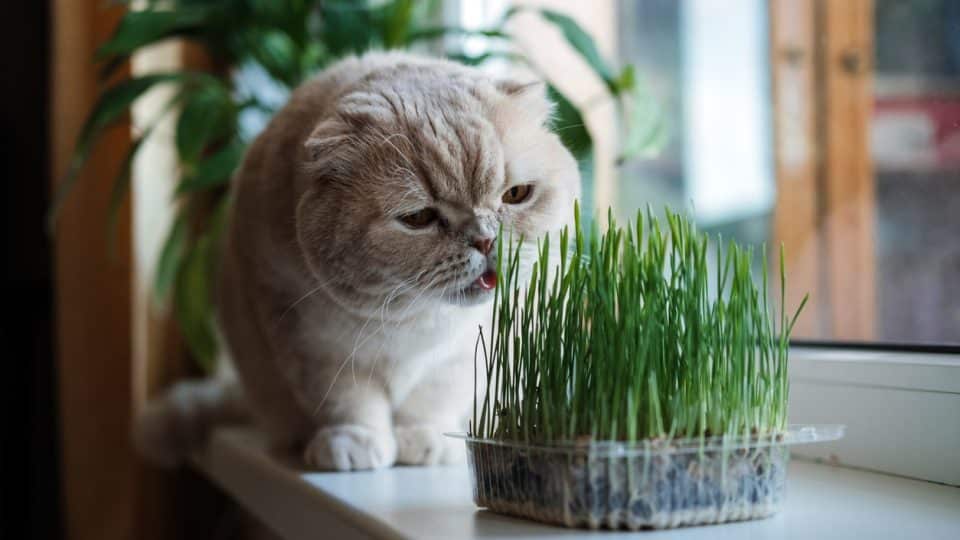You may have seen small containers of grass at the pet store and wondered why anyone would need that for their pet.
Turns out, eating green leafy plants is actually an extremely common behaviour for both wild and domestic cats, despite their carnivore diet. Many cats love to eat grass and need it for their digestion, which has inspired many cat owners to cultivate their “cat grass” at home.
What is cat grass?
“Cat grass” is grass that’s safe for cats, typically grown from rye, barley, oat, wheat, or alfalfa seeds. It looks a lot like the grass on your lawn, but it’s not.
It’s important to note here that cat grass is not catnip, which is a member of the mint family. The difference between catnip and cat grass is that catnip produces a euphoric, behavioural effect in cats.
Cat grass, on the other hand, is packed with antioxidants, chlorophyll, vitamins, minerals and other nutrients that promote cat health, plus fibre to support digestion.
Why Do Cats Like Cat Grass?
Nibbling on grass is a natural behaviour for all cats. Many cats enjoy the feeling of chewing on grasses, but cat grass may also provide benefits that their carnivore diets lack.
Eating grass may help cats settle their stomach or dispel things that their body can’t digest. Cats don’t have the necessary stomach enzymes to digest grass, which is why some cats may vomit shortly after actually eating grass. This can help clear their stomachs of fur, feathers, intestinal parasites, or bones from the prey they may have caught. Even though it makes them vomit, they’re eating grass on purpose.
Benefits:
- Relieves indigestion
- Natural laxative
- Parasite prevention
- Aids in removing hairballs
- Provides vitamins and minerals
- Mental stimulation

iStock/Otto Fearnley
Where Can You Get Cat Grass?
For your indoor or indoor/outdoor cat, it’s usually available in small packs at your local pet store. You may also consider growing your own. You can find a variety of cat grass kits as seeds or starts at Amazon or Pets at Home. It’s also easy to care for and should be ready for your cat to try in just five to seven days.
How Easy Is It To Grow?
It’s relatively easy to grow. If you’re starting from seeds, all you’ll need to provide is water and sunlight, and within about one week, your cat will have their very own garden for safe, healthy nibbling.
Cat grass is grown indoors for your cat. If you live in an apartment and your cat does not have access outside, your cat may chew on household plants instead, which can be dangerous if you have poisonous houseplants.
How To Grow Cat Grass
Follow the directions of your kit, which will look a bit like the following:
- Keep seeds damp, but not soaked with water.
- It should take three days to a week for seeds to sprout. Once the seeds begin to sprout, use less water.
- After about 10 to 14 days after sprouting, the grass should be about 4 inches tall, and you can give your cat access. Your cat can eat directly from the container.
- The grass will last between a week and three weeks if you give it natural light and daily watering.
- Be careful to follow instructions for watering. Too much water can cause mould.
- When the grass begins wilting or changing colour, start the process over again by planting a new container.

iStock/sasimoto
Should Your Cat Have Constant Access?
Your cat grass patch should be kept in a place separate from household plants to not confuse your cat. It can be hard for cats to distinguish the difference between what they can eat and what they can’t. Never keep poisonous plants or flowers in an area where your cat can easily get to.
Your cat can have constant access to it, but you should keep an eye on their behaviour. Cats should only ingest a small amount of this nutrient-rich treat at a time. If your cat is constantly vomiting, you should consider relocating their cat grass and only allowing access occasionally.
If your cat appears to be devouring it at every opportunity, you may want to consult your vet to determine if additional changes need to be made to your cat’s diet.



